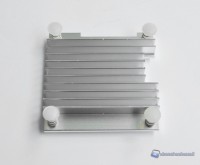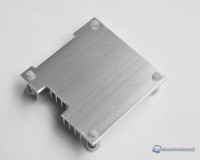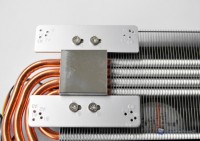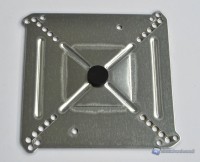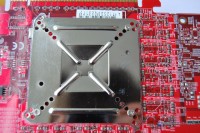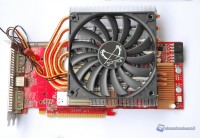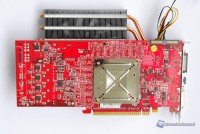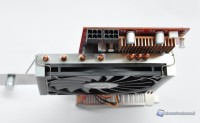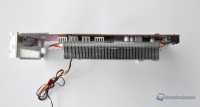Assembly
The installation of the Scythe Setsugen 2 was performed on a AMD Radeon HD 4870 produced by PowerColor, used in the past by our editorial team for testing other video card coolers.
Once removed the stock cooler, in this case produced by Zerotherm for PowerColor, we proceeded with cleaning the old thermal paste from the GPU and then the installation, if necessary, of RAM and VRM heatsinks. In our case it was possible to keep most of the existing heatsinks on RAM and VRM.
In other video cards you may need to apply a spacer above the GPU, where the external frame is higher than the GPU itself, or apply heat sinks for specific chips as the GeForce 200 NVIVO or sink equipped with vertical screws for the HD 5800.
Proceeding the installation mounting the bracket to be applied at the base of the heatsink. Depending on the compatibility list of holes in the manual, we will choose one of two brackets. That bracket with frame shape will be used for video cards with lower holes distance, the other, consisting of two separate pieces, will be generally devoted to the latest or higher-end video cards. In our case we installed this bracket using the 4 short screws provided.
Then we applied the thermal paste that comes with the GPU and proceeded with the completion of the installation. We layed the heatsink on the video card, placing the GPU in the lower left of the sink, making sure to check that there is contact between the base and the chip.At this point we proceeded with the application of the backplate by inserting the 4 long screws into the holes specified in the manual.The latter, with a rubber center, will make a slight pressure on the GPU, promoting good contact between the two surfaces.
When assembly is complete, we notice immediately that the heatsink is well above the video card, protruding visibly. So be careful to install this cooler in particularly narrow cases as those for HTPC. We recommend a minimum width of 19 cm.Due to the height of the heatsink may be necessary to use the PCI Express extension cable supplied, if the power cable (too short) should "get over" the video card to reach the power connector. In our case the connectors are positioned sideways so the sink is not a snag in any way.
Another factor to note is that most of the PCBs is not covered, without being invested by the airflow from the fan, this is particularly disadvantageous for the VRM heatsink that, as we shall see from the tests, reach rather high temperatures.
Finally, looking at the video card in profile, we notice that the heatsink Setsugen 2 is confined in the two slots occupied by the HD 4870, permitting the installation of other devices or video cards in adjacent slots. We can not neglect this aspect, which has imposed significant constraints on the cooling system, such as using a slim fan.

